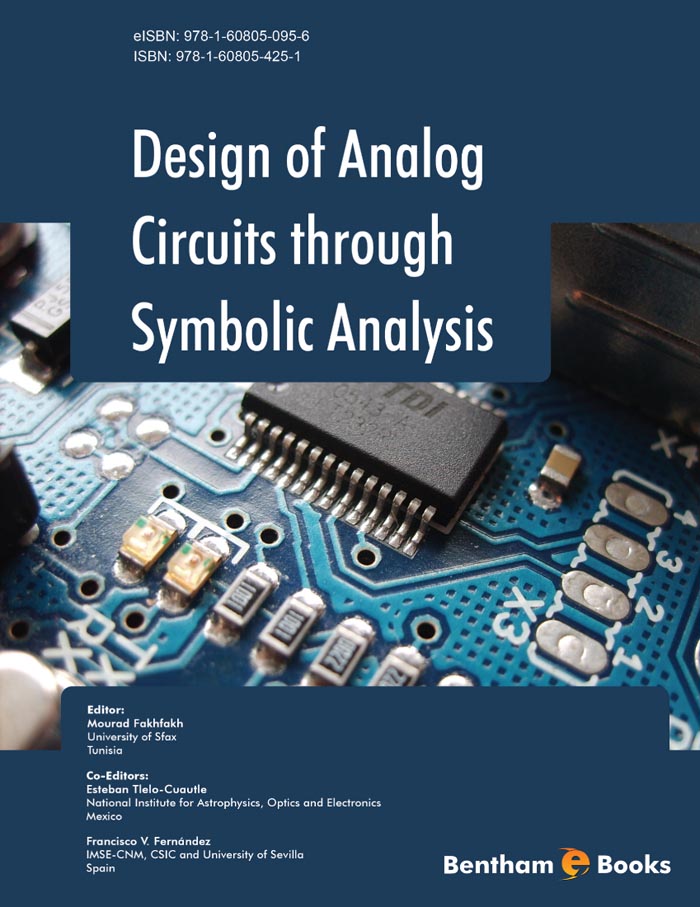Introduction
Symbolic analyzers have the potential to offer knowledge to sophomores as well as practitioners of analog circuit design. Actually, they are an essential complement to numerical simulators, since they provide insight into circuit behavior which numerical analyzers do not provide.
Symbolic analysis of electronic circuits addresses the generation of symbolic expressions for the parameters that describe the performance of linear and nonlinear circuits in three domains: DC, AC and time; some or all the circuit parameters can be kept as symbols.
Due to the fact that these expressions remain valid during the change of component values (as long as models remain valid), designers can have both, an insight into the behavior of the network and use the expressions to optimize the circuit’s performances.
This e-book presents, details and exemplifies famous symbolic analysis techniques. Industrial R&D topics, recent developments and future trends in the field of symbolic analysis are also highlighted. This makes the e-book a good resource for circuit analysis. Thus, it is intended for students and researchers as well as for industry designers.

